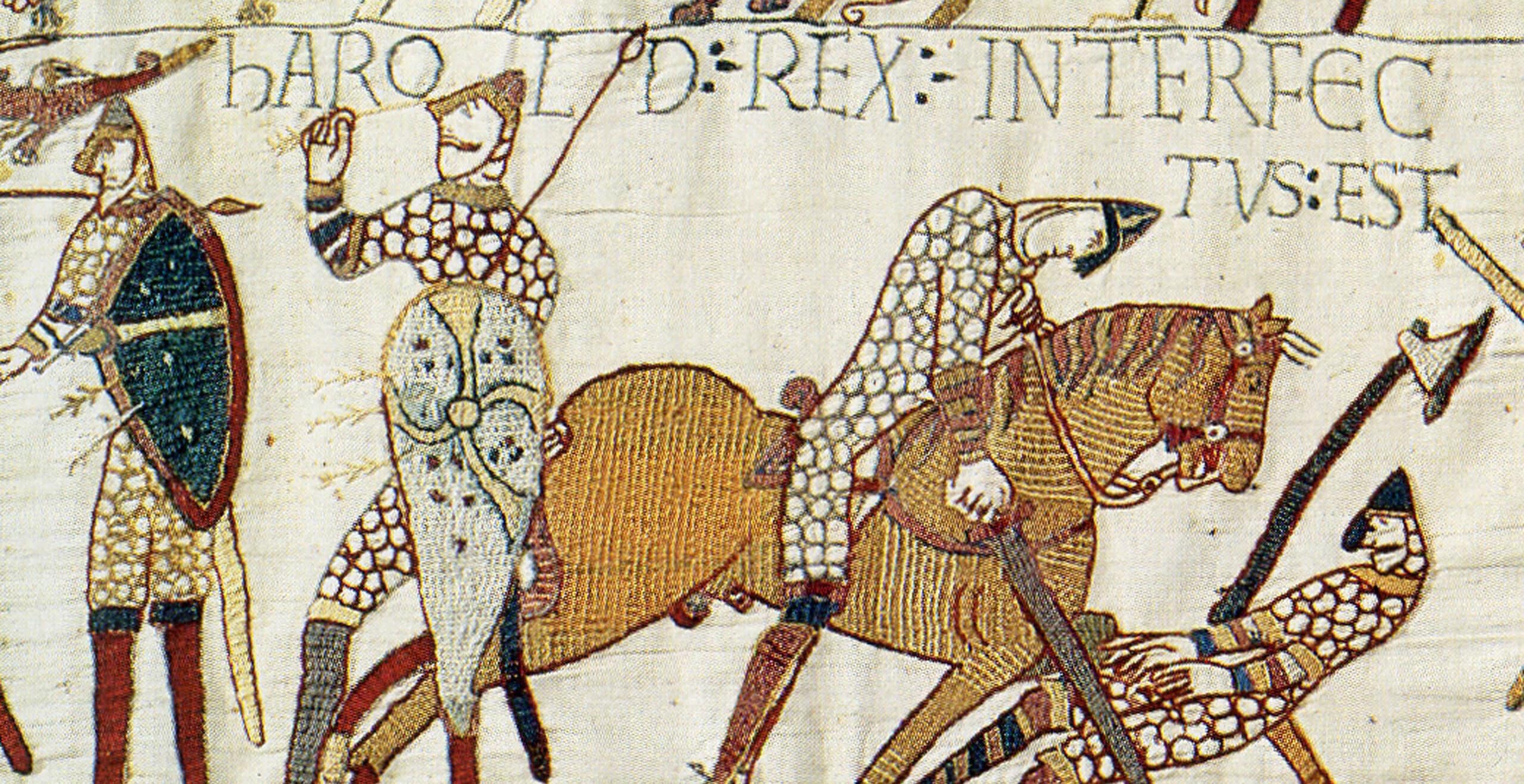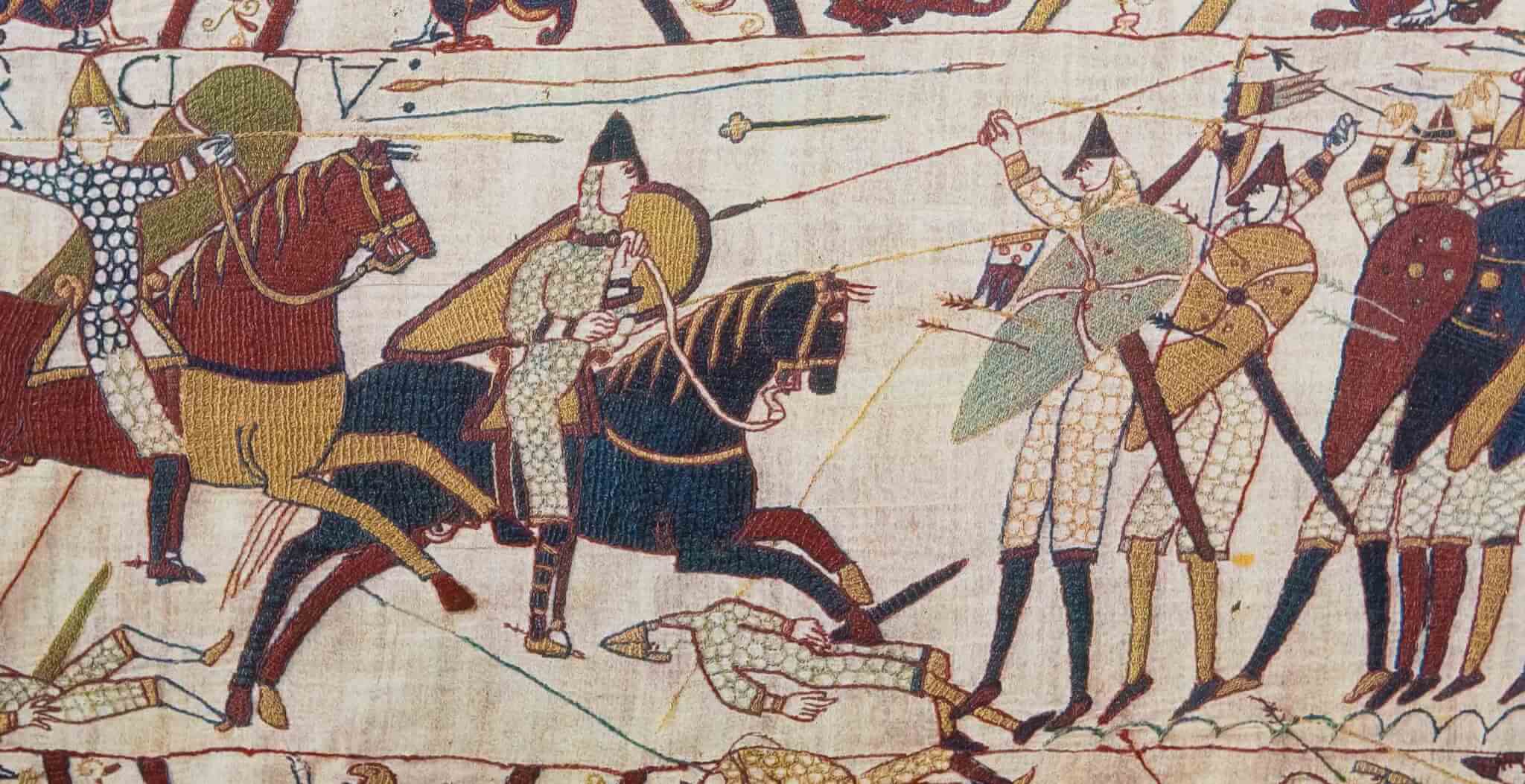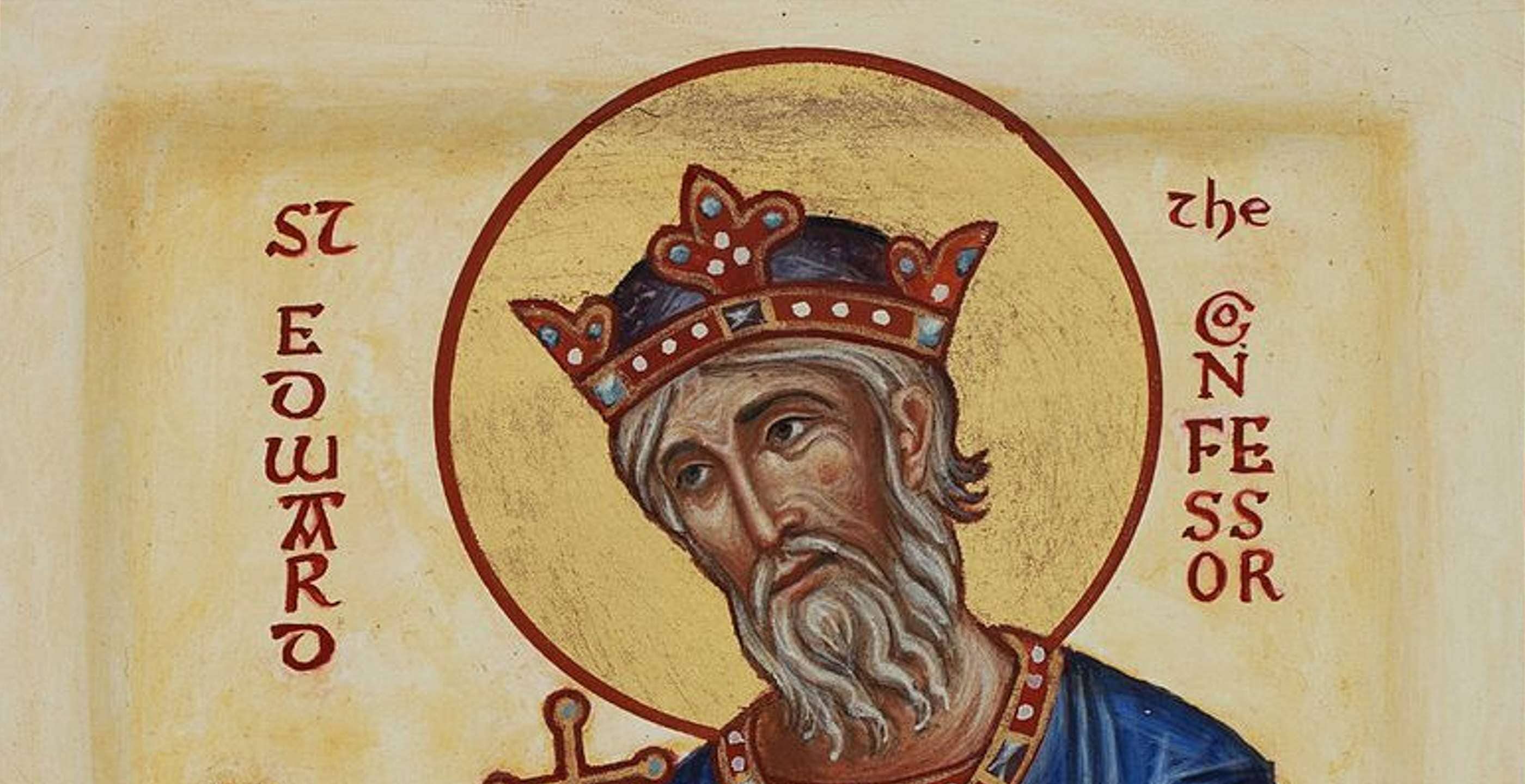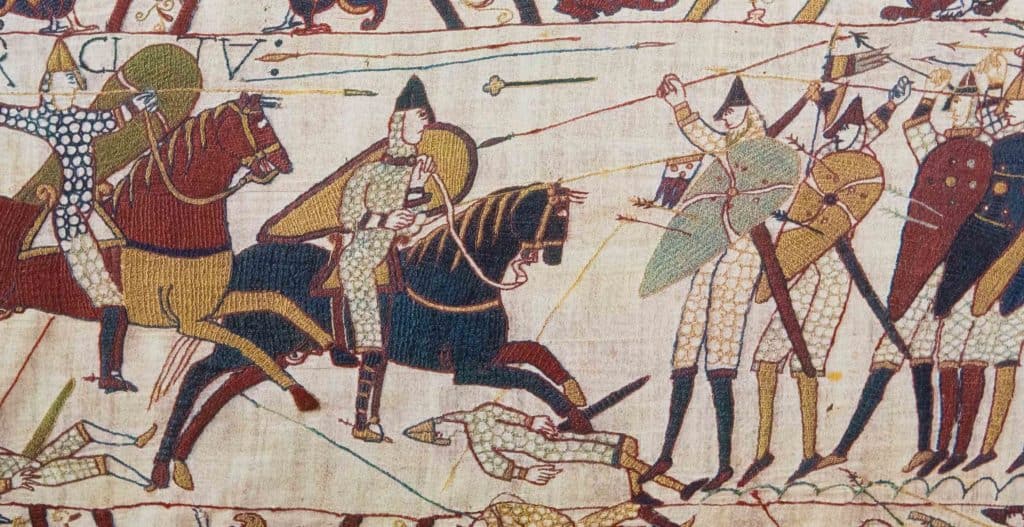January 5th 1066 would become an important date for the future of the English monarchy as it marked not only the date of Edward the Confessor’s death, but the start of a series of events which would bring an end to the Anglo-Saxon domination of the British Isles and usher in a new chapter in British history.
Upon the death of Edward the Confessor, a succession crisis instantly emerged with challenges from Harald Hardrada and William, Duke of Normandy. The man to take the English Crown however was Harold Godwinson, who only a day after Edward’s death was crowned at Westminster Abbey, ensuring his position as King Harold II.
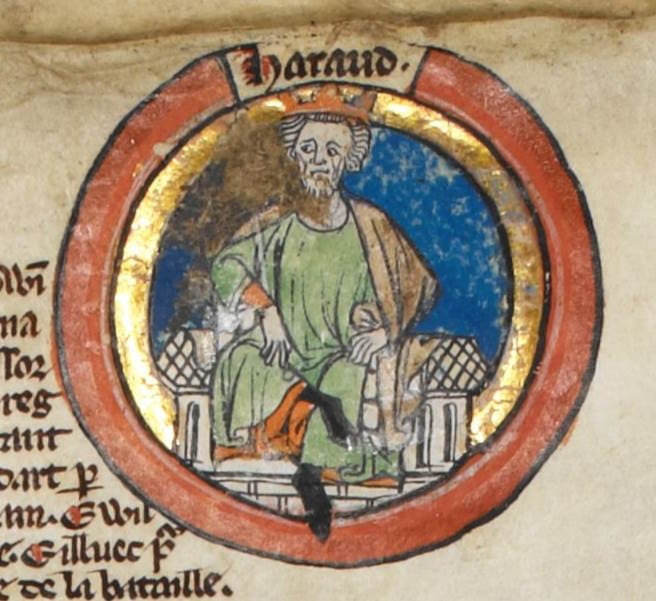
Harold Godwinson, the Earl of Wessex, had been elected by the witan of England to be the new monarch, however his position was far from secure and he even faced challenges from his own family.
Born in the early 1020s, Harold was the eldest son of Godwin, Earl of Wessex and Gytha, the daughter of a Danish chieftain. His family, on both Saxon and Danish sides, were extremely prominent and influential. On his mother’s side, he was related through marriage to King Cnut the Great.
With these royal connections, Harold’s future looked secure; however, his father’s relationship with Edward the Confessor turned sour after Godwin’s involvement in murdering Edward’s brother, Alfred Aetheling.
When Godwin passed away in 1053, whilst feasting with the king for Easter celebrations, Harold was left to inherit his position as the Earl of Wessex, making him one of the most powerful men in England, second only to the king.
Now in a powerful position, Harold was to serve the king as his lieutenant, helping to fight rebellion in Wales as well as dealing with a revolt against his own brother, Tostig, in Northumbria.
In order to suppress the febrile atmosphere amongst the rebel forces, he exiled his brother, leading Tostig to develop a deep and lasting resentment against Harold which he would later act upon when his brother became king.
Moreover, Harold had also encountered another future rival when in 1064 he was shipwrecked off the coast of Normandy. It was here that Harold was supposed to have sworn an oath to support William, the Duke of Normandy and his claim to the English throne.
When Edward the Confessor died two years later, these events in Harold’s life would form the basis of the challenges to his reign as he would fend off not only Norman ambitions but also those of Harald Hardrada, who received backing from none other than Harold’s own revenge-seeking brother, Tostig.
In the meantime, Harold had acted swiftly to secure his position and with the support of the Witan, he became King of England, much to the annoyance of William of Normandy.
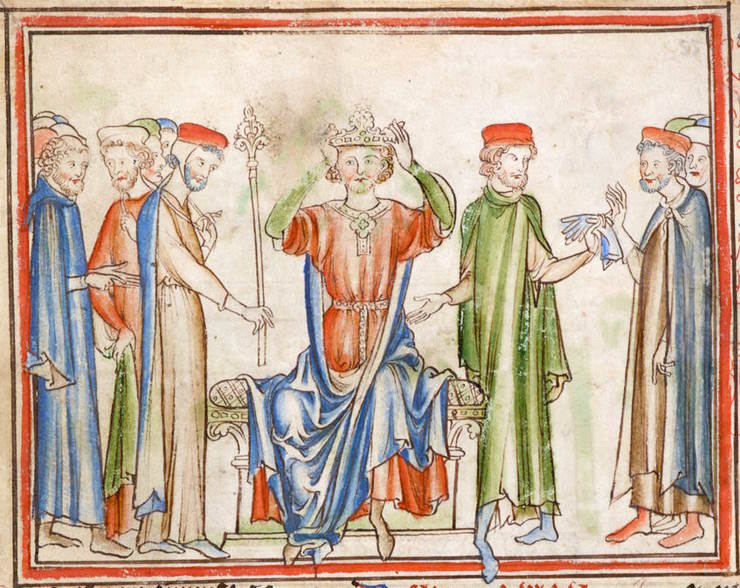
Not long after his coronation, a bright and spectacular star was seen moving through the sky and was seen by many as a warning of things to come. This was recorded in the Bayeux Tapestry and was later understood to be Halley’s Comet. As events unravelled however, the ominous interpretation of the star came to fruition.
No sooner had Harold become king, did his claim to the throne come under direct threat from three individuals who wanted the Crown for themselves, or in the case of his brother, revenge.
Harald Hardrada, which translates to “hard ruler” was the King of Norway and he claimed that his right to the English throne originated from an agreement made by the previous King of Norway, Magnus I and Harthacanute. Within this agreement were the terms that if either should have died without an heir, the surviving king would have become ruler of both kingdoms.
Meanwhile, Tostig had designs of his own and was responsible for raising a fleet in Flanders in order to launch a series of raids against southern England.
In response to his brother’s attack, Harold raised an army and navy, forcing Tostig to retreat and turn his attentions to East Anglia and Lincolnshire. Once again, Tostig was pushed back by a counter-attack launched by Edwin, Earl of Mercia.
He would soon realise that in order to become a more serious threat to his brother’s position he needed to raise support from other sources. His first port of call was Scotland, where he travelled in order to garner loyalty for his cause. He soon went on to Norway where he met Hardrada and the two men made arrangements for the downfall of King Harold.
With events moving rapidly, in the spring of 1066 Hardrada had assembled his fleet at Tondheim with the plan to join forces with Tostig in Scotland.
Subsequently, their invasion plan was executed in September 1066. However in France, William of Normandy had been making his own auspicious plans to usurp the English king.
It was the duke’s assertion that Edward the Confessor had in fact promised him the throne, and that when Harold was shipwrecked in Normandy he had sworn an oath over a sacred Christian relic in support of these claims.
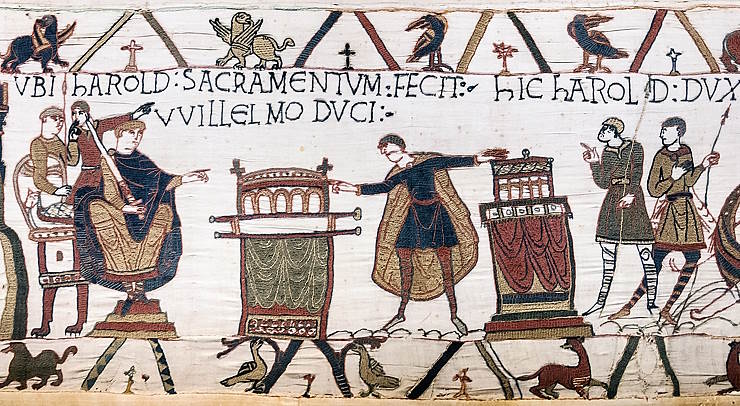
William thus began to assemble his fleet on the estuary of the River Dives and ensured his provisions included not only military equipment but the necessary people and materials needed for more permanent infrastructure, demonstrating his surety.
He also was said to have received support from Pope Alexander II who provided him with the papal banner as a sign of approval.
September 1066 was to be the month where both claimants to the throne would vie for power and Harold had a considerable task on his hands.
King Hardrada of Norway and Tostiglaunched their invasion and on the 20th September 1066 fought a battle at Fulford, just outside York.
Whilst English fighters put up a considerable defence, several lives were lost and the city succumbed to Hardrada and his forces.
Still keen to protect his southern coastline, Harold had been in the south of England when he heard the news of the battle. Without further ado, he raced as speedily as he could north and arrived in Tadcaster only four days later with his forces assembled.
Harold’s journey had in fact been incredibly fast and took his opposition by surprise.
The following day, on 25th September 1066, the Battle of Stamford Bridge took place. This significant battle ended in victory for King Harold and his men.
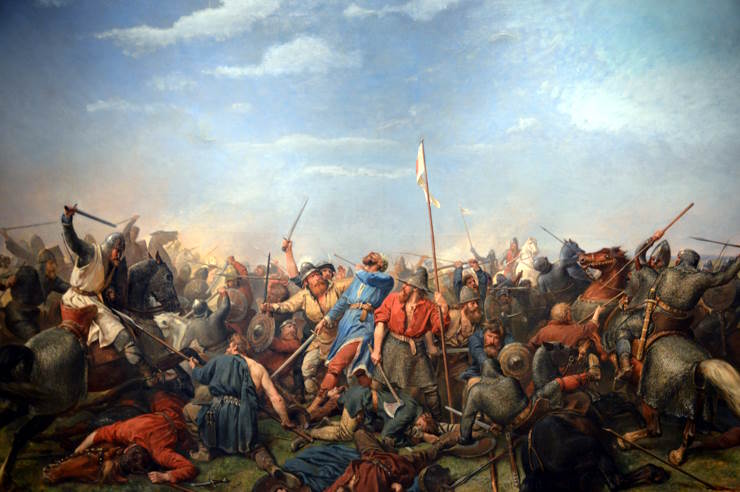
The Vikings had been caught off-guard by the swift arrival of Harold’s troops and suffered great losses; their lack of chain mail body armour exacerbating the high death toll.
Both Hardrada and Harold’s brother Tostig were among the several thousand casualties that day.
With the invading forces all but annihilated, the Vikings were forced to retreat, with only a handful of ships required for the men returning home. The survivors accepted the terms of a truce with King Harold and returned home, agreeing to never again invade England.
Having quelled the invasion from the north and killed one of the claimants to his throne, Harold only had three days of respite before his more formidable opponent, William of Normandy arrived on English shores.
On 28th September 1066, after a slight delay, William’s fleet arrived and the Norman invaders soon got to work building their base and fortifications at Hastings.
Still in the north, Harold was told of their arrival on 1st October and immediately rode southwards, assembling troops as quickly as he could, despite the significant losses incurred at Stamford Bridge.
Still reeling from his previous contestation, Harold was determined to see off this threat as well.
Thus, on 14th October 1066 one of the most famous battles in British history occurred, the Battle of Hastings.
Harold secured his defensive position on a ridge whilst William of Normandy gave his orders to his archers to fire uphill. At first, the Norman forces found it difficult to break the English line of defence, however a crucial moment in the battle whereby some Bretons appeared to break away and turn back downhill led to a break in the ranks by Harold’s men who set off in pursuit. This would turn out to be a bad decision for the English forces who were then cut-off and became isolated.
With the English defence line showing signs of weakness, William used this tactic again, feigning retreat in order to split apart the English troops who would pursue the Normans and fall into their trap.
Sadly, things turned from bad to worse for the English who were struck down by a rain of arrows, one of which allegedly struck Harold in the eye. The injury he sustained was later documented in the Bayeux Tapestry.
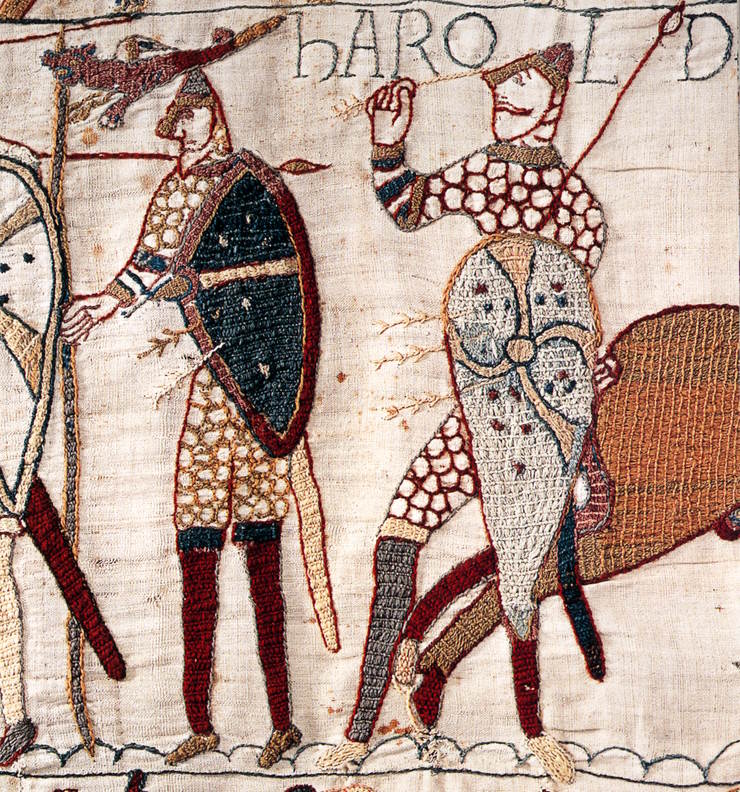
For Harold, this would be his final stand as he died on the battlefield defending his crown.
Upon his death, the remaining English forces continued fighting, but began to crumble under the Norman pressure and eventually William and his men claimed victory.
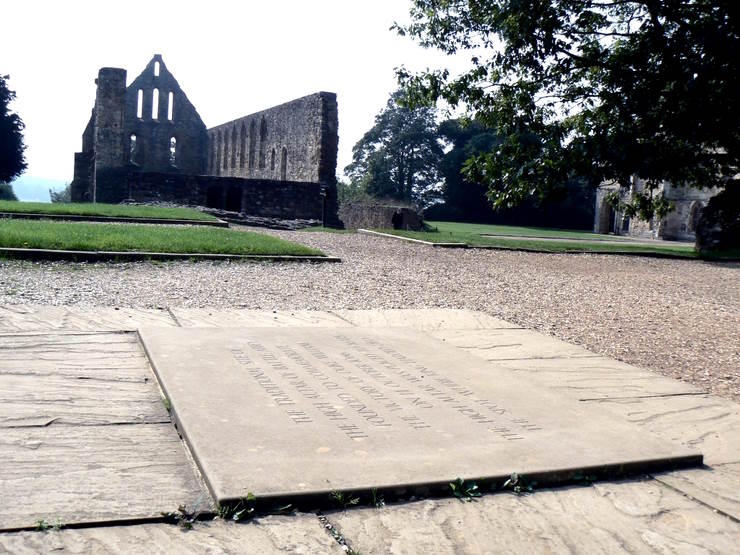
The Battle of Hastings was over. King Harold II’s valiant efforts as the last Anglo-Saxon king were not enough and William, Duke of Normandy was later crowned King of England at Westminster Abbey, ushering in a new era for the British Isles.
Anglo-Saxon society was going to change forever. The Normans were here to stay.
Jessica Brain is a freelance writer specialising in history. Based in Kent and a lover of all things historical.
Published 21st September 2023
